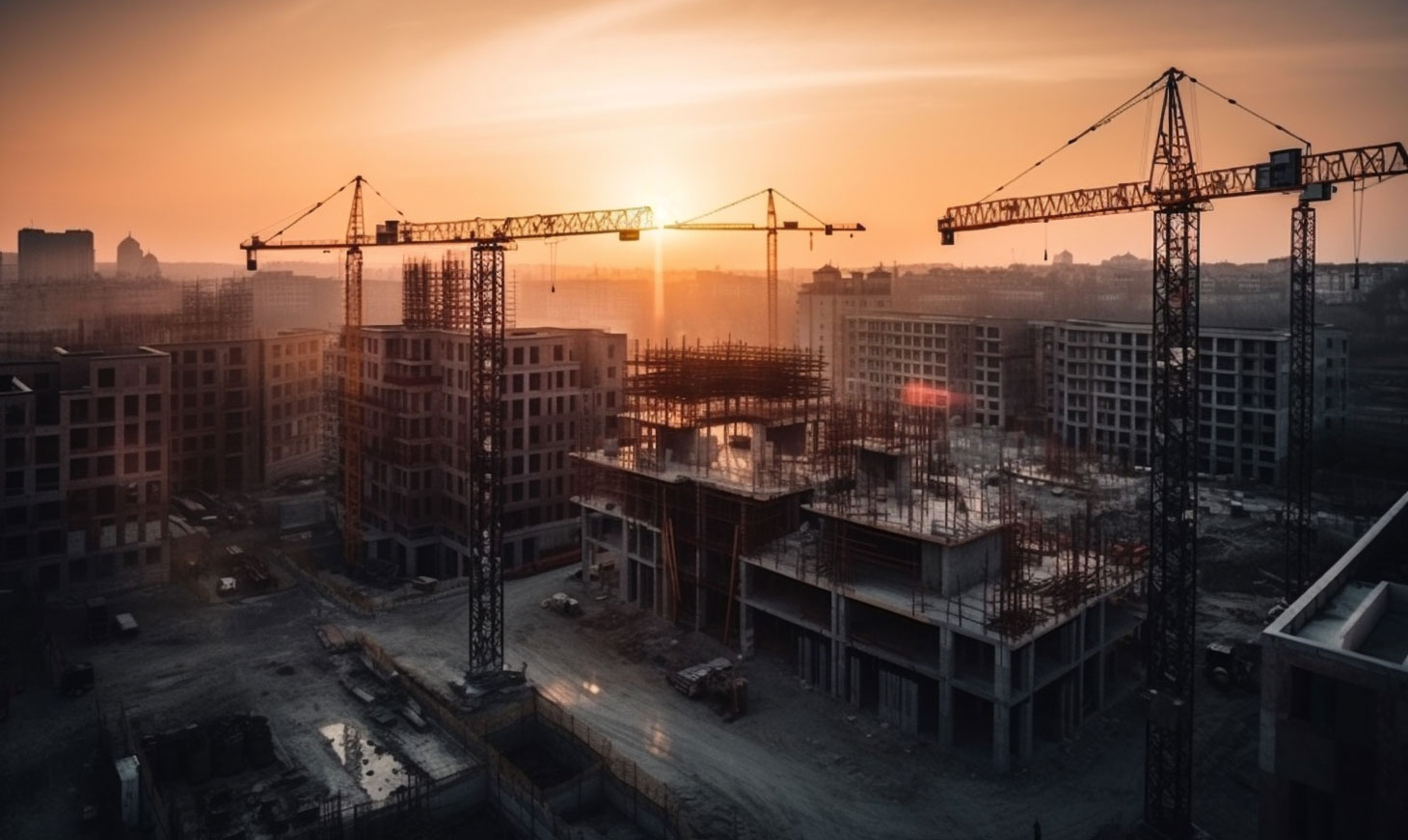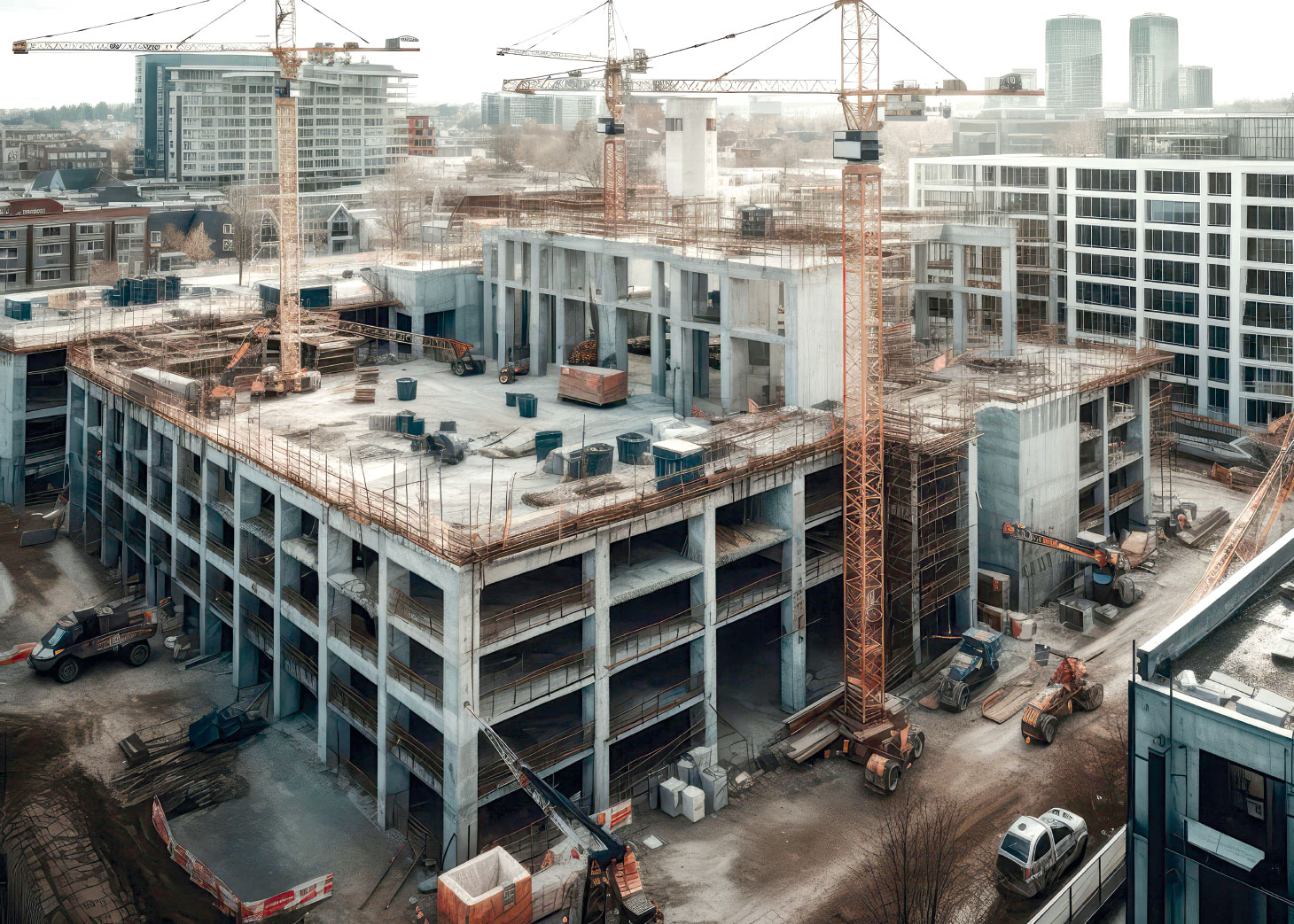
According to The World Bank, more than half of the global population lives in an urbanized area. By 2045, it is predicted that this number will increase to six billion. As urban populations expand swiftly, the built environment must keep pace to provide the homes and facilities that people need.
When it comes to construction, it can’t be business as usual. The built environment is the largest emitter of greenhouse gases (GHG) and produces at least 37 per cent of global emissions. If there is a hope of cutting emissions and restricting global warming to 1.5 degrees Celsius by the end of this century – the goal outlined in the landmark 2015 Paris Agreement on climate change – then the way buildings are constructed, maintained and decommissioned must change.
That’s the focus of a new report funded by the German government and produced by the United Nations Environment Programme (UNEP), in association with the Global Alliance for Buildings and Construction and the Yale Center for Ecosystems in Architecture (Yale CEA).
Released on Sept. 12, “Building Materials and the Climate: Constructing a New Future” provides a roadmap towards more sustainable construction. Two years in the making, the document draws upon the expertise of many contributors from six continents, led by Anna Dyson, Yale CEA’s founding director and the Hines Professor of Architecture at the Yale Schools of Architecture and Environment (YSE).

Piling Canada connected with two of the report’s lead authors to discuss their findings and the implications for the global construction industry.
Naomi Keena, assistant professor at McGill University’s Peter Guo-hua Fu School of Architecture and founding director of McGill’s TRACE (Think-tank and Research in Architecture and Circular Economy) Lab, explains the report’s origins.
“In today’s industry, in the design and construction of buildings, there’s been a large focus on operational energy,” she said. “We’ve heard a lot about net-zero energy buildings, but that typically only looks at the operational phase of the building life cycle. It doesn’t look at the extraction of materials, the manufacturing of those materials, the construction process and the end-of-life phase.”
She says as power grids around the world become more decarbonized through the adoption of cleaner sources of electricity, a building’s operational energy consumption and associated emissions will also decrease.
“Then, the big challenge in the building industry will be the embodied carbon coming from our building materials,” said Keena. “This report really focuses on that materials aspect. Where are we getting our materials from, how are they being manufactured and what’s the embodied carbon associated with that? How are these buildings being maintained and then at the end of life, what’s happening to these materials? Are they going to the landfill, can they be recycled, can they be reused? This report is about taking a whole life cycle approach to the decarbonization of buildings.”
“We’ve heard a lot about net-zero energy buildings, but that typically only looks at the operational phase of the building life cycle. It doesn’t look at the extraction of materials, the manufacturing of those materials, the construction process and the end-of-life phase.”
Naomi Keena, McGill University’s Peter Guo-hua Fu School of Architecture and TRACE Lab
Barbara Reck, senior research scientist at YSE and node lead at the Remade Institute, says the energy required to make different building materials can vary considerably.
“Steel and concrete are among the most energy-intensive materials to produce,” she said. “On the other hand, bio-based materials require much less energy to produce. In fact, timber that stays in a building for 50 to 100 years will actually become carbon-negative. It has the potential of storing the carbon longer than the forest could store it because, at some point in the forest, the tree will fall, decompose and release its carbon.”
Reck says that today, the total energy footprint of a building breaks down into about three-quarters operational energy and one-quarter embodied carbon. However, cleaner energy and present-day initiatives are gradually reducing that operational component.
“With a business-as-usual scenario, by 2050 the share of the embodied carbon (in present-day buildings) will increase to 49 per cent, while operational energy will decrease from 75 per cent to 51 per cent,” said Reck. “That is because operations are becoming more and more efficient, and the relative carbon share of the building materials becomes greater.
“Our report is trying to say that the 49 per cent of embodied carbon projected by 2050 is still a lot of carbon. Given our climate emergency and given that everybody is now striving for net zero, is there a way to get the embodied carbon to net zero? Our report lays out a very ambitious roadmap on how to do this.”
A three-pronged approach
In addition to focusing on embodied carbon and CO2 emissions produced through the extraction, manufacture and installation of various building materials, the UNEP report offers a three-pronged suite of recommendations for decarbonizing the built environment. This approach is based on a trio of concepts: avoid, shift and improve.
“We look at how we can reduce embodied carbon by 2060, knowing there will be more construction and more demand for buildings,” said Keena.
The first recommendation is to avoid waste and the extraction of non-renewable materials. The report encourages a circular economy, focused on extending the life of existing buildings and reusing and recycling current materials.

“Then, we are looking to shift to the use of biomaterials; regenerative materials that are typically extracted from forestry or agricultural by-products,” said Keena. “Biomaterials should always be local to where you are building, so we looked at coconut husk, hemp, corn stalks, sawdust – the waste from crop (that) can be converted to building materials. If we can sync the building materials industry with agriculture and forestry, we can store carbon for longer.”
While timber is commonly used in Canadian residential construction, Keena says that moving to more bio-based insulation products, such as cellulose, can help reduce a home’s carbon footprint.
The final recommendation centres on how to improve on renewable conventional building materials and the way they are produced, including concrete, steel, metals, glass and bricks. Electrifying and decarbonizing the energy used to produce and maintain these materials is a key concept to realizing this approach.
Reck says that overall, the report encourages the building industry to increase material efficiency, making the most of the available supply to ultimately do more with less.
Looking at life cycle
“Building Materials and the Climate: Constructing a New Future” stresses the need to tackle decarbonization in the built environment through a total life cycle approach. To achieve success quickly and efficiently, supportive government policies must enable all stakeholders across the supply chain to work together. The concept of circularity features heavily in the report.
“If we are reusing materials, what happens at their end of life is very important,” said Keena. She says that findings from Montreal indicate that selective deconstruction of residential buildings – focusing on the reusing and recycling of materials – offered GHG reductions of 63 per cent compared to landfill disposal.
At the other end of the process, Reck says material efficiency is a critical manufacturing concept that will help maximize yield.
“It’s about trying during manufacturing to use the best available technologies and design for longer lifetimes. If you can expand the building lifetime, that is in a way the lowest hanging fruit. That’s why maintenance is so important. Lifetime extension is really the biggest measure.”
Barbara Reck, Yale School of Environment and Remade Institute
“It’s about trying during manufacturing to use the best available technologies and design for longer lifetimes,” she said. “If you can expand the building lifetime, that is in a way the lowest hanging fruit. That’s why maintenance is so important. Lifetime extension is really the biggest measure.”
She says Canadian aluminum production is an example of successful decarbonization. “Aluminum needs the most energy to produce of all metals. Having access to hydro power in the aluminum industry, Canadian aluminum is one of the least carbon-intensive aluminum in the world.”
Although the road to decarbonization has been mapped by many industries, including steel and cement producers, the problem is still how to scale up quickly enough to reach the world’s pressing climate goals.
“Our report presents a novel way to put existing knowledge together,” said Reck. “Our approach is an all-hands-on-deck approach. The building sector needs to look at the entire life cycle. Yes, conventional materials can be decarbonized, but will it happen quickly enough? At the same time, we must encourage design for disassembly, reuse and recycling, and shift to bio-based materials.”
Will the world mobilize quickly enough to meet the climate goals identified in Paris? Reck says there has been a lot of interest in the new report from within the architectural, engineering and construction community, which is looking at the document as an inspirational roadmap toward a more sustainable built environment.
“We were very ambitious (in the report), but our vision is that by 2060, it could be achieved,” she said.
To read more, go to unep.org/resources/report/building-materials-and-climate-constructing-new-future.